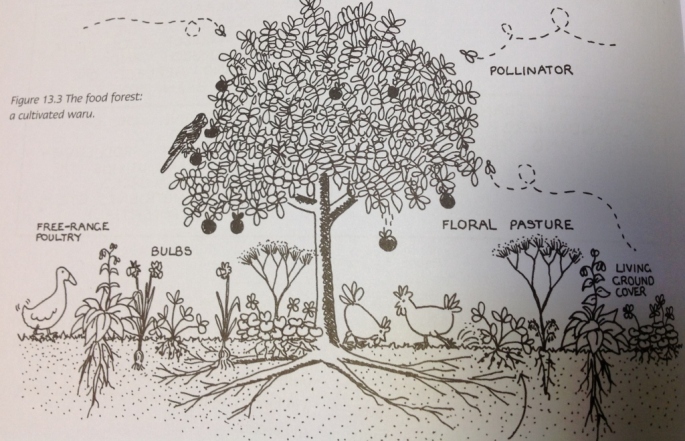
The term ‘food forest’ conjures up images of an abundant edible landscape similar to the chocolate landscape of Willy Wonka in the movie “Charlie and the Chocolate Factory”. I think it is a wonderful term that should inspire us to create ecosystems of food in our schoolyards, backyards and community places. It has ended up in my vocab via a local Permaculture Design Course I am undertaking.
Permaculture is an Australian born philosophy of living. In my head it has meant organic gardening with plenty of hippy stuff thrown in. In reality permaculture is based in ecology, traditional knowledge and is dedicated to working with natural elements rather than against them.
It is truly all about sustainable living – and I think many of the teachings could easily be implemented in our school and backyard gardens.
When designing or creating our indoor and outdoor living spaces, Permaculture encourages close observations of natural influences like sun, wind, water, wildlife, soil and vegetation. Permaculture strives for a self contained, high yield system of growing food.
To create a food forest, we need to harness the power of ecosystem interactions that occur in nature. In most of our food gardens – plants are taken out of their ecosystem role and planted in a very different habitat. What if we could harness the power of plant and animal specialisation to help in our food growing? Large scale monocultures and commercial production are the opposite of this way of growing.

Think of the different layers of vegetation that occur in a forest. We have ground covers, shrubs, small to large trees, climbers, fungi and the list goes on. The idea of a food forest is to replicate this with food producing plants. The Australian bush is a food forest for the knowledgeable and certainly provided abundant food for Aboriginal Australia for thousands of years.
The benefits for your soil, your belly and the creatures in your garden are tremendous. Consider stacking plants into vegetation layers, planting to protect from sun and wind, creating a microclimate in your garden and promoting biodiversity.
Slope, water retention, windbreaks, aspect, soils, mulches, plant selection, pest management, nutrient creation and retention and pruning need to be on your list of considerations.
Rosemary Morrow has written an excellent book on Permaculture design – “An Earth Users Guide to Permaculture” and can be purchased online at most book stores.
Get in touch with your local permaculture community:
Blue Mountains Permaculture Institute
Under the Choko Tree – sustainable urban living








